Episode #377: When High Scores Lie: Rethinking How We Assess in Math Class
LISTEN NOW HERE…
WATCH NOW…
On a recent coaching call, we spoke with a new teacher who was feeling great about a math quiz her students had just aced—until she wasn’t. The quiz focused on using the array model for multiplication, and students were awarded points for drawing the array and getting the right product. But when we looked deeper, something didn’t sit right: Did these scores truly reflect her students’ understanding and grade-level expectations?
In this episode, we unpack what was missing from the math assessment and why simply getting the “right answer” isn’t enough. We explore the importance of strategy sophistication, the difference between additive and multiplicative thinking, and how to design math assessments that actually measure mathematical proficiency.
In this episode, you’ll discover:
- High scores don’t always mean high levels of understanding in math.
- Strategy sophistication matters—especially in assessing multiplication.
- Math assessments should reflect not just answers, but the thinking behind them.
- Teachers can refine math assessment practices to better capture student growth and proficiency.
Attention District Math Leaders:
Visit Keenan and Jake’s website: skillsbasedclassroom.com
Not sure what matters most when designing math improvement plans? Take this assessment and get a free customized report: https://makemathmoments.com/grow/
Ready to design your math improvement plan with guidance, support and using structure? Learn how to follow our 4 stage process. https://growyourmathprogram.com
Looking to supplement your curriculum with problem based lessons and units? Make Math Moments Problem Based Lessons & Units
Be Our Next Podcast Guest!
Join as an Interview Guest or on a Mentoring Moment Call
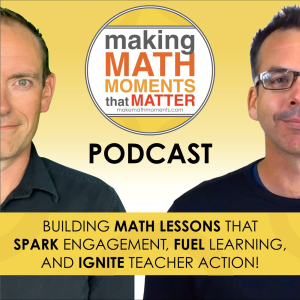
Apply to be a Featured Interview Guest
Book a Mentoring Moment Coaching Call
Are You an Official Math Moment Maker?
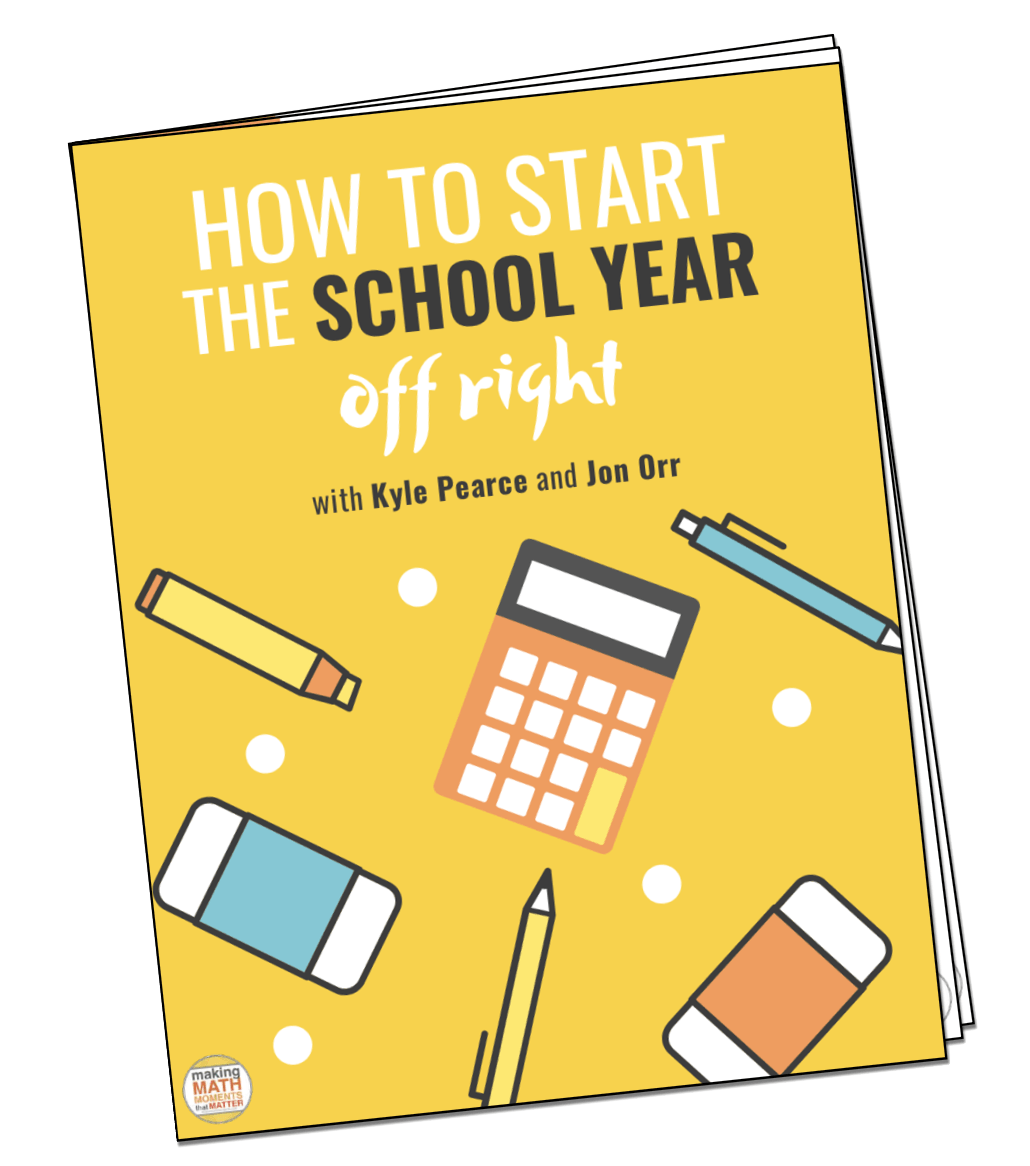
FULL TRANSCRIPT
Yvette Lehman: I recently had a coaching conversation with a new teacher that I thought we could dig into on this episode. I gave some advice, but I’m curious what advice you would have given in this situation.
Kyle Pearce: Yeah, let’s hear all about it. Yeah, hitting us blind and I would love to riff here with you.
Yvette Lehman: Okay, so I ran into an Ontario teacher recently, and we just were having a conversation, we started to uncover some pebbles that the teacher was experiencing. They’re a grade three teacher. And they were describing, I guess, some apprehension about a quiz that they had recently sent home. So the quiz was around multiplication. And there’s an expectation in grade three here in Ontario that
Students are working with facts up to 10 multiplied by 10. And one of the models that they want to promote or leverage is the array model in particular. And they even start with the concrete or visual array at this point. So she gave a quiz. There were 10 questions, 10 facts. Students had to draw the appropriate array and then find the product. So essentially every question was awarded two points. And what she found is that most students did well.
They were getting 20 out of 20, 18 out of 20. She sent these quizzes home to be signed by parents. But then started to feel this apprehension knowing that report cards are going home soon. And she thought to herself, did that 20 out of 20 on that quiz paint the wrong picture for parents? Did that 20 out of 20 tell parents that their child is doing well when it comes to
meeting the provincial standard for the grade level expectations. And I’m going to talk a little bit about why maybe this became an issue. So what she noticed is that some of the students who got 20 out of 20 were drawing the array and then counting every single square in order to find the product. So they would draw an array that was seven by six, and then they would count one, two, three, four, five, six, seven, eight to find the
the product. While other students in the class were using their known facts of 2, 5 and 10 and they were decomposing the array. So let’s say it was 7 times 6 and they were saying, okay, well I know that 5 times 6 is 30 and I know that 2 times 6 is 12. So the product is 42. So two students in the class both got 20 out of 20 on this quiz. One was using one-to-one counting. Another one was using known facts and multiplicative reasoning.
but they got the same mark. And I think the teacher started to question like, am I painting the wrong picture here for parents? What should I have done differently? Because clearly these two students should not be receiving the same level of achievement.
Jon Orr: Sure. Got it. They should not receive the same level of achievement depending now based off what we know about the expectations for grade three at this level. So basically one student isn’t really meeting the expectation the way it was written, the other one is. Is that what you’re saying?
Yvette Lehman: For sure, guess too, even before we dig into the expectation, it’s like the level of thinking or sophistication from these two students is not the same. Like they’re at very different places on a developmental continuum. You know, one is at like a, let’s say accounting versus multiplicative reasoning.
Jon Orr: But, but yeah, sure. And I think this is where the expectation, the details of the expectation have to be understood, right? Because, because if I, if I don’t know that, if I don’t know what that expectation is actually supposed to be, then, then how actually am I supposed to give a mark or, or an assessment to a parent that’s supposed to represent their understanding or their thinking on that expectation?
So we kind of have to like break down and know that what is this expectation talking about? You know, what are the nuances that it’s asking us for at this grade level for in for that topic?
Kyle Pearce: Well, you know what I find interesting too is that Justin sent when we send something home and I’m reflecting on myself and you know how many times as a classroom teacher I sent an assessment home and I may not have had enough information as to what that number even meant. So you think about and I haven’t seen this and maybe you can go in a little more deeply here. But if let’s say you know a parent gets this 20 out of 20.
you know, home and it looks like multiplication. It smells like multiplication. I’m thinking, you know, all right, we’re good to go. Like my, my, my child knows how to multiply, but what it might sound like here is that there just may not, it may not have been assessing what they were trying to assess or that, you know, all those kids are 20 out of 20 on the very, very basic concept.
that they were really instructed to do, which is draw an array, I believe it was, and then find the product without any real specification as to how, why, show me how, explain it, or anything like that, right? So it’s like they did everything they were supposed to do, and there wasn’t really anything specifying there or nothing that you could see from an evidence perspective as to, unless you were there with the student, you probably won’t know how they came up with the product either.
Jon Orr: Well, that’s actually my question is, is she’s unsure, like it sounds like she’s just unsure in general of like the accuracy of the numbers that went home, but you’re saying, imagine one student did it this way and one student this way, but what you’re saying I think is she doesn’t know one way or the other which students did one way the other unless she has other data on top of say the quiz results to support.
that which may be some observations, maybe some conversations that she can then go, yes, I saw so and so use two fives tens. This person I’ve only seen count this assessment item. I don’t know by just looking at the assessment item and counting my check marks, which one of those they did unless there’s something else there that said that. So I’m curious about how she even knows which of the two say strategies was utilized.
Yvette Lehman: Yeah, so this teacher in particular did have an idea based on having observed these students using the array. So she had had enough observation to know that some students were still relying on one-to-one counting where others were using some strategic skip counting and some were using known facts. And her reflection was that her assessment didn’t capture that. It only told one story. So.
Jon Orr: That one assessment item, you mean, didn’t capture that?
Yvette Lehman: Yes, that was sent home. Yes, though the quiz, right? Because her observation data isn’t sent home necessarily. It’s this quiz that’s sent home. And that’s where the concern that like I’ve now sent this quiz home, but it doesn’t tell the whole picture of the evidence that I’m collecting. And so I think there was some reflection on this teacher’s part. And to your point, John, I think the first step and the first bit of advice that we took was we dug into the expectations. What is the expectation?
when it comes to multiplying using an array model by the end of grade three. To your point, I think you may have mentioned it, Kyle, it’s like, is the point just to draw the array and know the product and there’s no reference to what strategy students should be using? Because in that case, maybe all of these students did meet the standard. Maybe all of these students met the expectation. So we did a little bit of digging and luckily here in Ontario, if you’re an Ontario teacher, think we need to give some credit to the Ministry for
creating these incredible teacher supports. I have yet to see another curriculum that has the depth of teacher support that we have here in Ontario with the examples and the sample tasks and really helping us understand the connection to not only this single specific expectation, but the other specific expectations that fall under this overall.
So another specific expectation in grade three is that students need to, their mental math skills are around knowing their two, five and 10 facts. And so what this expectation does is it actually brings that language into the teacher supports and the sample tasks. So it talks about the idea that we need to be helping students see that numbers, that factors can be decomposed into friendlier or known facts and that they should be leveraging those known facts to find the total product.
and they actually reference specifically in the teacher supports both over and under partial products. So they talk about bringing nine up to ten and then removing a group. They talk about decomposing a number like seven into five and two. So both types of partial products are referenced within this expectation. And so the teacher wasn’t wrong when her gut said, I should be honoring the thinking of students who have who have
started to use this more strategic or more sophisticated strategy, but in hindsight, this quiz that went home didn’t give her that opportunity to distinguish the sophistication of the student strategy on that one assessment.
Kyle Pearce: Well, and I wonder as well, and I’m sure it’s probably more of a for next time, but imagine if there was even just a very small rubric that was there to kind of help, you know, assess like it could be question by question. It could be for the assessment as a whole, just in terms of the sophistication of the strategy, you know, and it could be, it doesn’t have to be on a four point scale. can be, you know, whatever.
she feels is appropriate, where she could go, you know, it’s like, yes, they they did draw the array, they did come up with the product, but the sophistication of the strategy, and if she wants to name it, you know, is, you know, not, I don’t want to say not sophisticated, but early stages of sophistication, so to speak, where it could be, you know, one to one counting, or, you know, she can like label some of them, or even just by adding a little feedback on there.
That could also go a long way so that it’s like whatever the number says, again, numbers sometimes people focus on them and they don’t do the reading. So that could be problematic. But really, I think what it comes down to here is it sounds like, so we know students are on the right track. They have the tools now to help them work on the sophistication of their strategy, which is a great start. But we’re still early in this learning journey for some of the students in terms of what it is we’re hoping to achieve by the end of the year.
Jon Orr: Yeah, like I can think there’s a few different things to think about specifically. And I think, you know, she’s expressed concern that the, you know, the item that went home didn’t actually represent the current thinking or the current assessment of where the student is on these expectations. So, you know, having redesigned the item could be like, I think that’s what you’re kind of saying, Kyle, is like, could we redesign the item?
so that it embeds criteria in, say, the item itself, or the teacher has developed, say, that success criteria to evaluate this, and then that goes home attached to the side or with it so that it communicates where the student is on, say, that continuum for this expectation.
The other thing that I was thinking of too is that if you don’t think that there’s anything wrong with the item, trying to then communicate, whereas the issue is actually the communication to the parent, if she felt like I’ve miscommunicated the evidence I’ve actually collected, then now it’s like maybe there’s no need to redesign the item. The next move is like how to communicate your observations and conversations to the parent.
because you’ve got those, which are valid assessment items that you have about that student. here in Ontario are very much part of what we need to be doing in assessment for the expectations that our students are, say, showing they’re thinking on. So that might be a case where she needs to kind of go like, next time, this is what I would do, as it might not necessarily need to redesign the item, but strategize how do I communicate my observations and conversation?
Yvette Lehman: So I think that one other piece of advice that I gave connected to what both of you said is I think the idea of having success criteria is critical, but that that success criteria needs to be communicated in advance of the assessment. So for the students and the parents who are supporting these students at home in preparation for this assessment, if the expectation in order to achieve or exceed the provincial standard or get a level four here in Ontario,
is that students should be using these known facts of two, five and 10 to decompose the factors to use partial products, then that needs to be communicated before the quiz. It needs to be reinforced when students go to write the quiz because we often talk about the idea that if that strategy is new to a student, they may not feel confident to use it on a quiz. They might rely on
what they trust the most, which is what they’ve used the most, which is likely counting. So they’re gonna default to counting even if they have that it’s emerging. If it’s not established as a criteria for this assessment that this is what I am looking for, I am looking for evidence that you are decomposing these arrays into friendlier facts. If that’s not clearly communicated to the parents and to the student,
to me there’s a lack of transparency even going into this assessment. So that’s where I think at that point, like it was too far gone, you know, the realization came after, which is great because like you said, moving forward, this teacher can make some adjustments to the way that they go about, you know, engaging in this type of assessment. So I guess I can’t strongly suggest enough that anytime we are assessing students, particularly if it’s going to be a summative assessment, Our success criteria needs to be established well in advance and it needs to be communicated to the child and if we want parents as partners or caregivers as partners, it also needs to be communicated home.
Jon Orr: Right. And it has to start with like you answering that question. Like, what is it that I’m trying to assess? And how is it exactly and how is it related to the expectations that I want? You know, I’m teaching through, say, this unit or this module or, you know, wherever we are in the course. And this isn’t just grade three, it’s all grades. It’s like we really have to take time and go, what is it we’re trying to do? What are the big things I’m trying to emerge? How do I want to make sure that I gather that evidence?
Kyle Pearce: Right. Why are we doing this today? You know, like what is the purpose?
Jon Orr: What are the forms of evidence and what are those successes like you’re saying? What is the success? What am I gonna look for to tell me that students are meeting say these expectations in these ways? I agree. I think we can’t stress that enough as doing the work of teaching math is knowing exactly what we’re trying to achieve and knowing exactly what it looks like when success is
Kyle Pearce: I like it. you know, I think too, I want to give educators out there permission that you’re allowed, you know, the tough part is when we’re doing problem-based learning, when we’re doing rich tasks and problem solving, we want students to use whatever tools they have in their tool belt to get there. But the whole purpose at the consolidation time is for us to unpack a new strategy, a new model, a new idea, a big idea. And when it comes to assessment,
we need to give ourselves the permission to ask students to see certain things, right? So today, this is not a rich task. This is not a creative problem solving. I want to see, can you do X, Y, or Z? And let’s see how you’re doing so that I can give you more opportunities to strengthen that if there is a need for it, right? So being specific about what it is you want to see, and then asking students to use a specific strategy or a specific model
When we’re assessing is not a bad thing. And I think sometimes we get confused by that, right? Because we don’t want to funnel early in the process, early in the learning journey. But when it comes to assessing, we’ve given them all kinds of opportunities to do and use different strategies. But we do need to encourage them to use specific strategies. Otherwise, they won’t get any better at utilizing them, right? And then it doesn’t become a go-to tool in their toolbox, which is the whole purpose of why we’re doing this work.
Yvette Lehman: In summary, feel like there were a few big ideas here. So the first one is we need to know, we need to teach the depth of our expectation or our standard, which means we need to unpack it. So we need to really have a solid understanding of what is the goal by the end of the year. So now it’s May, end of grade three, what is the goal? And oftentimes that work is best done with somebody else. Sometimes we have a bias or a partial understanding. And so the more opportunities we have to unpack with others, the better.
We talked about having really clear success criteria that’s communicated prior to the assessment so that students know exactly what they need to do in order to achieve a level three or four. And then we also talked about leveraging or finding opportunities to capture observation and conversation because to your point, John, it’s sometimes hard to know what the student did if I don’t ask them or observe them. And so how do I gather that evidence and communicate that with stakeholders as well?
Jon Orr: For sure, for sure. sometimes what I always think about our trees, and we’re talking assessment mostly, obviously here. And assessment lives in so many components of our tree, our classroom tree, our math teaching tree. And specifically, in order for us to really understand the success criteria we’re looking for, we have to have the strong roots of our tree. We have to understand the math. We have to be strong with our own mathematics.
efficiency. So strengthening the roots of our tree is essential for being able to assess in these ways. So, you know, the roots of your tree is an important factor we’re really talking about here today. The other part is, you know, probably which always goes hand in hand with the roots, which is the branches of our tree, which is our teaching moves, you know, what are we doing before middle after? How are we structuring our lessons to position ourselves to
gain as much evidence as we can on say the expectation. So if we get clear on our success criteria for this activity or for this assessment item, can we structure and position ourselves to gain that evidence? So either observations or conversations, or maybe it is the product that we’re putting in front of students and it’s been well documented about what we’re looking for. But those are probably the big two components of where assessment lies when we talk about our trees.
If you want to know more about your tree, head on over to makemathmoments.com for a report and you can fill out a quick survey there to talk about say those six key areas. You know, we talked about assessment, which is kind of those two areas, but it does live in probably all six of those areas. But if you want to know more, head on over to makemathmoments.com for a report, fill that out, we’ll send you a report on those six. But looking forward to talking some more, especially assessments. I feel like I enjoy. talking about it and strengthening my assessment practices for my students. But let’s talk soon. Take care.
Thanks For Listening
- Book a Math Mentoring Moment
- Apply to be a Featured Interview Guest
- Leave a note in the comment section below.
- Share this show on Twitter, or Facebook.
To help out the show:
- Leave an honest review on iTunes. Your ratings and reviews really help and we read each one.
- Subscribe on iTunes, Google Play, and Spotify.
DOWNLOAD THE 3 ACT MATH TASK TIP SHEET SO THEY RUN WITHOUT A HITCH!
Download the 2-page printable 3 Act Math Tip Sheet to ensure that you have the best start to your journey using 3 Act math Tasks to spark curiosity and fuel sense making in your math classroom!
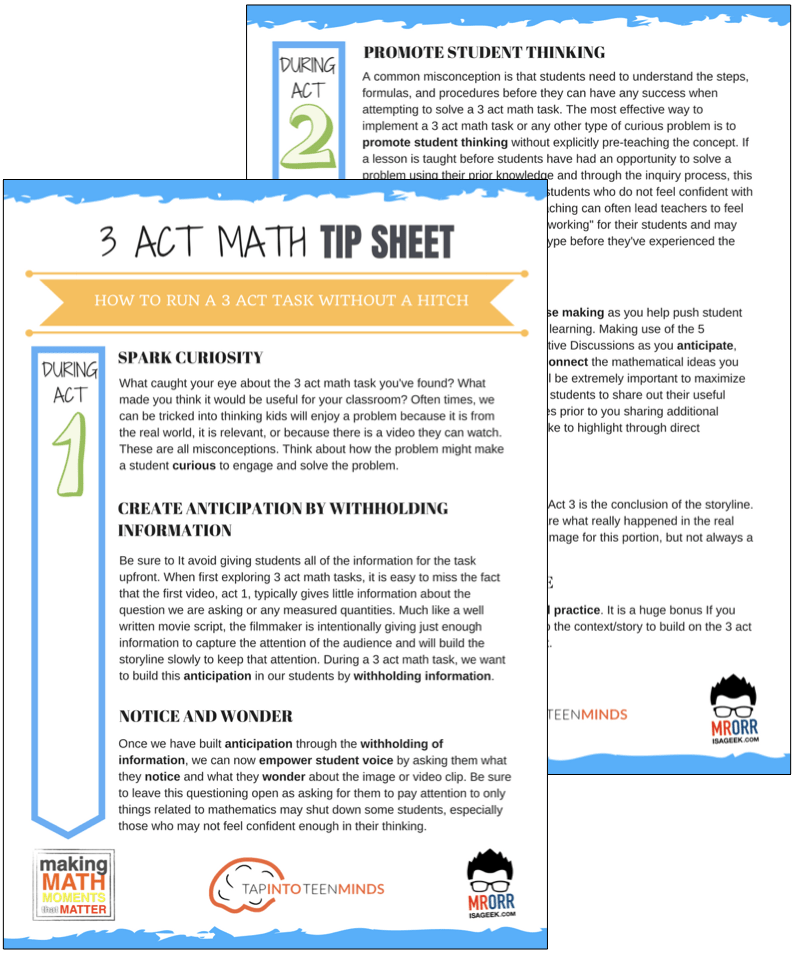
LESSONS TO MAKE MATH MOMENTS
Each lesson consists of:
Each Make Math Moments Problem Based Lesson consists of a Teacher Guide to lead you step-by-step through the planning process to ensure your lesson runs without a hitch!
Each Teacher Guide consists of:
- Intentionality of the lesson;
- A step-by-step walk through of each phase of the lesson;
- Visuals, animations, and videos unpacking big ideas, strategies, and models we intend to emerge during the lesson;
- Sample student approaches to assist in anticipating what your students might do;
- Resources and downloads including Keynote, Powerpoint, Media Files, and Teacher Guide printable PDF; and,
- Much more!
Each Make Math Moments Problem Based Lesson begins with a story, visual, video, or other method to Spark Curiosity through context.
Students will often Notice and Wonder before making an estimate to draw them in and invest in the problem.
After student voice has been heard and acknowledged, we will set students off on a Productive Struggle via a prompt related to the Spark context.
These prompts are given each lesson with the following conditions:
- No calculators are to be used; and,
- Students are to focus on how they can convince their math community that their solution is valid.
Students are left to engage in a productive struggle as the facilitator circulates to observe and engage in conversation as a means of assessing formatively.
The facilitator is instructed through the Teacher Guide on what specific strategies and models could be used to make connections and consolidate the learning from the lesson.
Often times, animations and walk through videos are provided in the Teacher Guide to assist with planning and delivering the consolidation.
A review image, video, or animation is provided as a conclusion to the task from the lesson.
While this might feel like a natural ending to the context students have been exploring, it is just the beginning as we look to leverage this context via extensions and additional lessons to dig deeper.
At the end of each lesson, consolidation prompts and/or extensions are crafted for students to purposefully practice and demonstrate their current understanding.
Facilitators are encouraged to collect these consolidation prompts as a means to engage in the assessment process and inform next moves for instruction.
In multi-day units of study, Math Talks are crafted to help build on the thinking from the previous day and build towards the next step in the developmental progression of the concept(s) we are exploring.
Each Math Talk is constructed as a string of related problems that build with intentionality to emerge specific big ideas, strategies, and mathematical models.
Make Math Moments Problem Based Lessons and Day 1 Teacher Guides are openly available for you to leverage and use with your students without becoming a Make Math Moments Academy Member.
Use our OPEN ACCESS multi-day problem based units!
Make Math Moments Problem Based Lessons and Day 1 Teacher Guides are openly available for you to leverage and use with your students without becoming a Make Math Moments Academy Member.
Partitive Division Resulting in a Fraction
Equivalence and Algebraic Substitution
Represent Categorical Data & Explore Mean
Downloadable resources including blackline masters, handouts, printable Tips Sheets, slide shows, and media files do require a Make Math Moments Academy Membership.
ONLINE WORKSHOP REGISTRATION

Pedagogically aligned for teachers of K through Grade 12 with content specific examples from Grades 3 through Grade 10.
In our self-paced, 12-week Online Workshop, you'll learn how to craft new and transform your current lessons to Spark Curiosity, Fuel Sense Making, and Ignite Your Teacher Moves to promote resilient problem solvers.
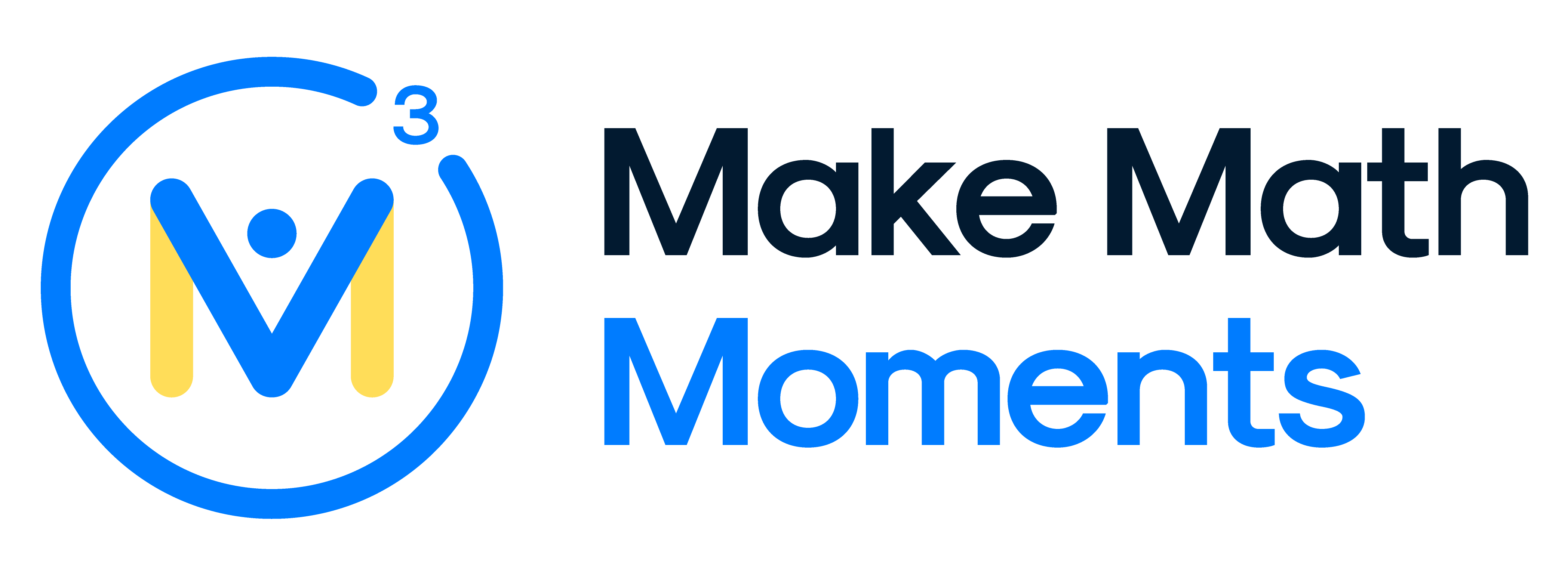



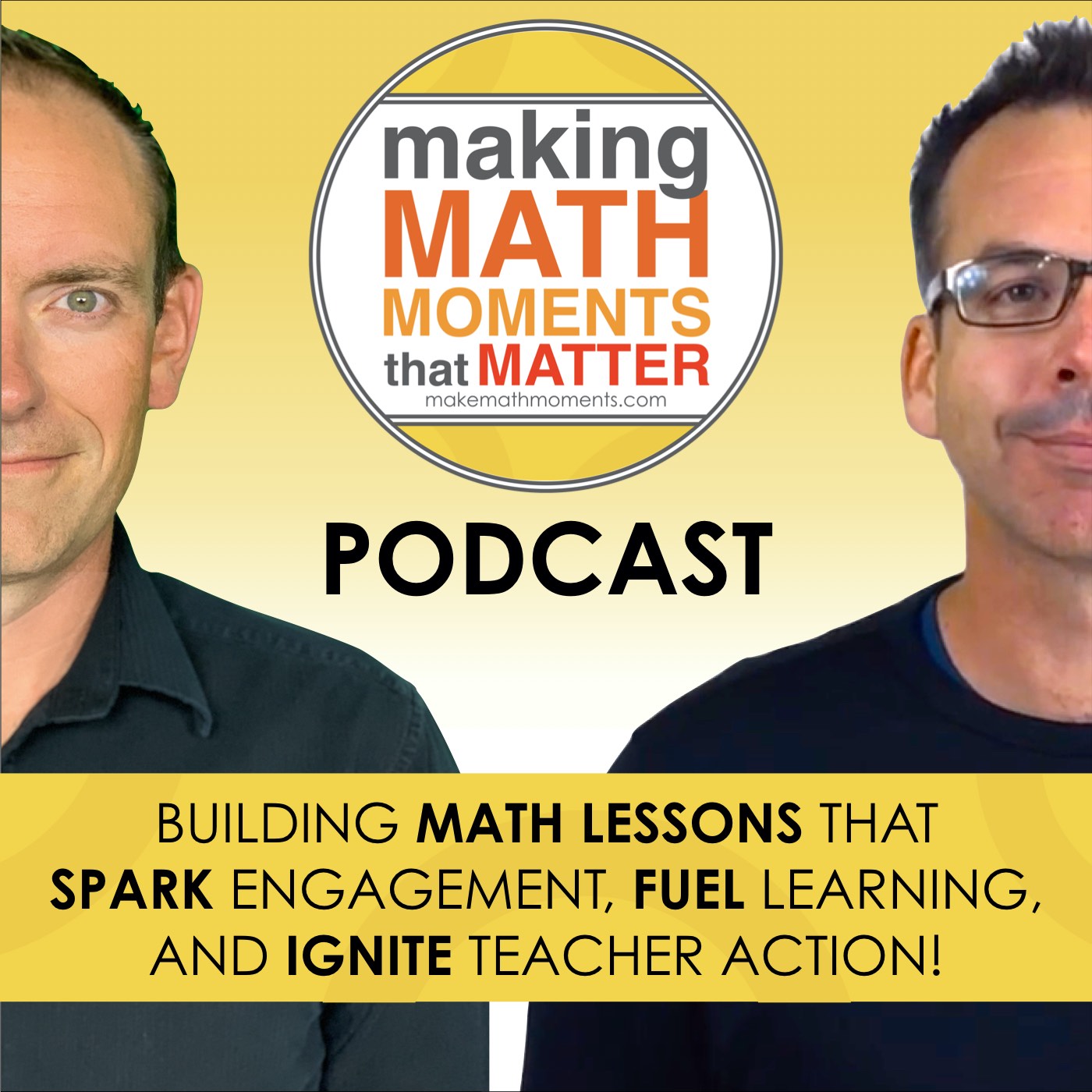


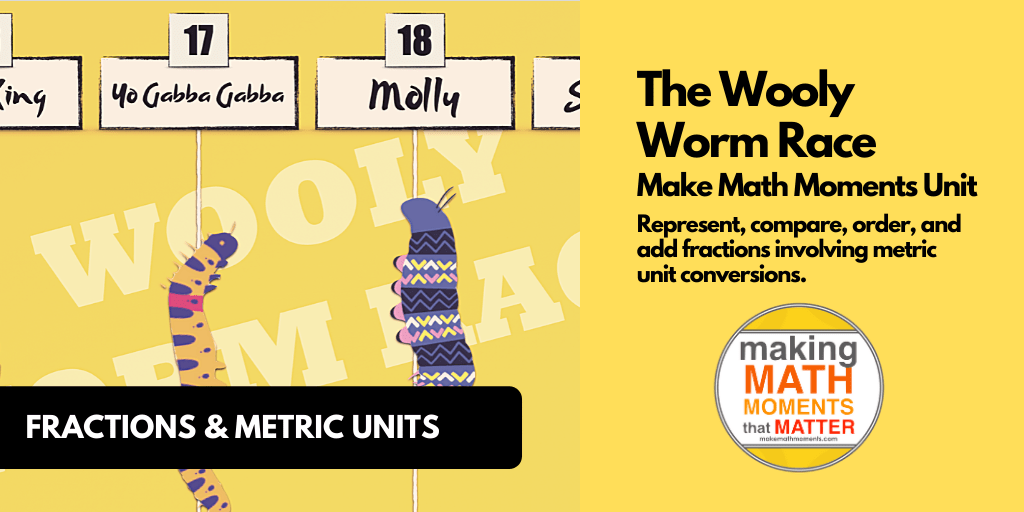
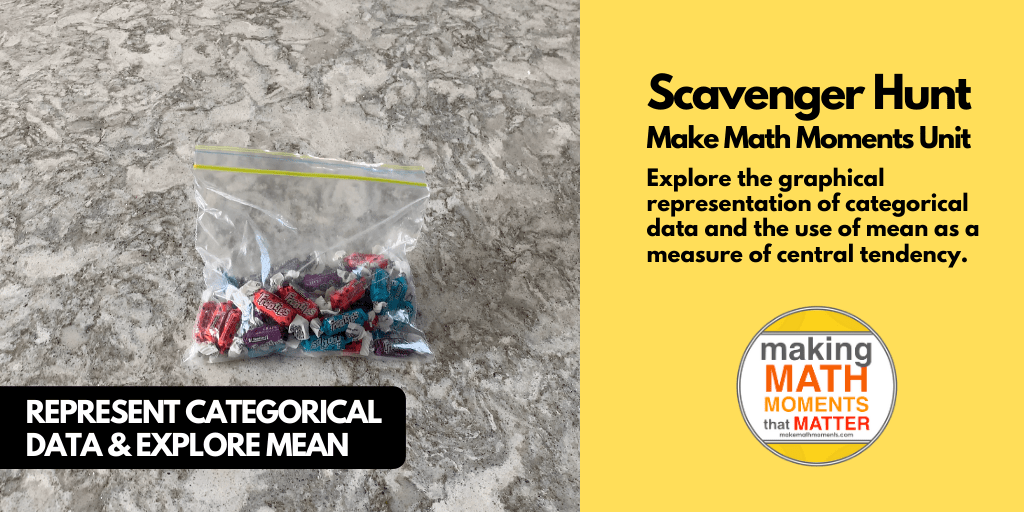

0 Comments